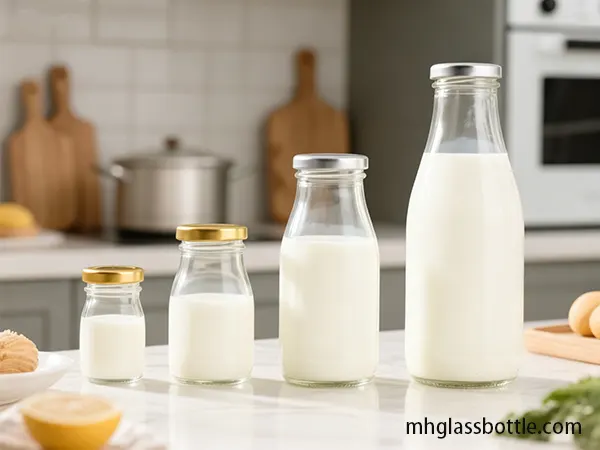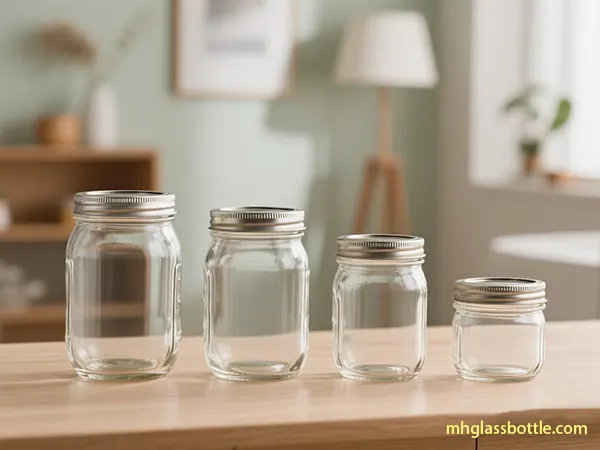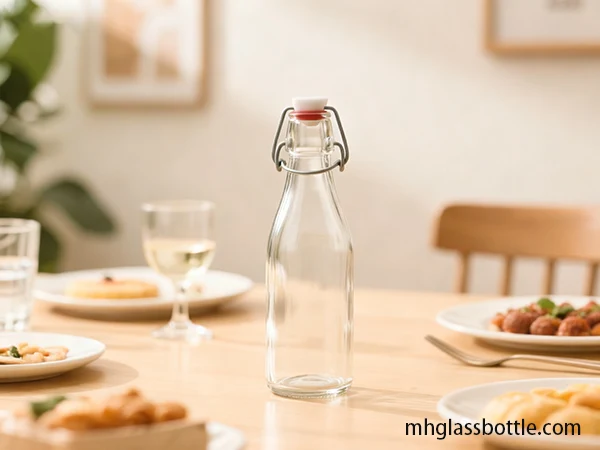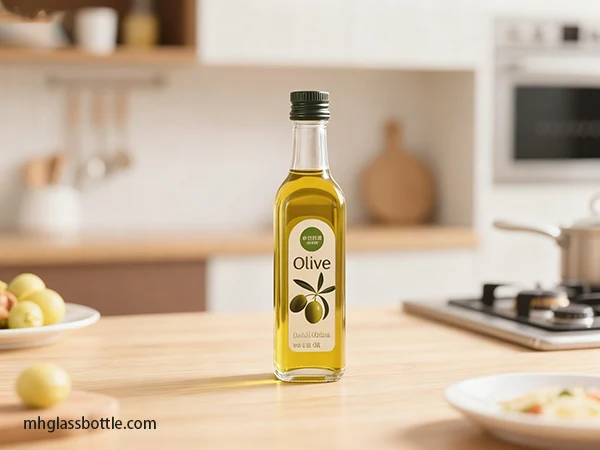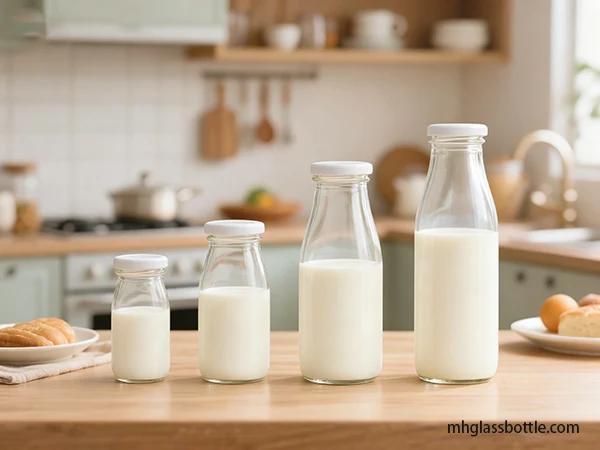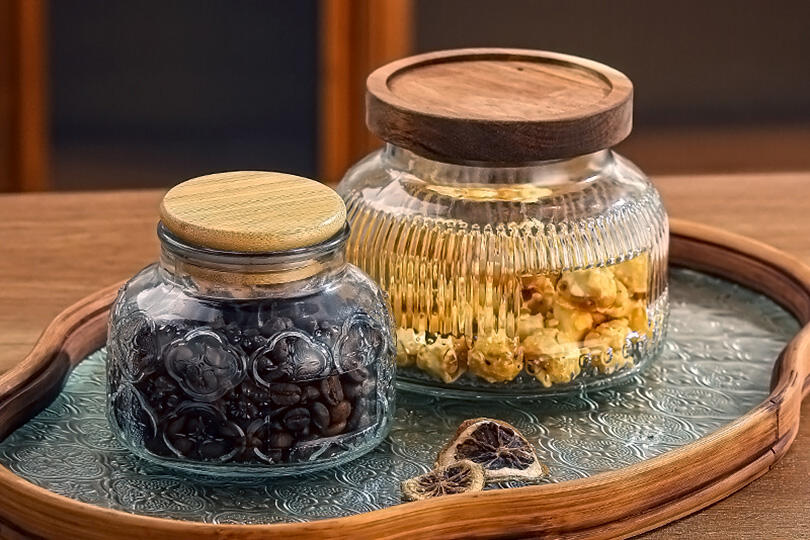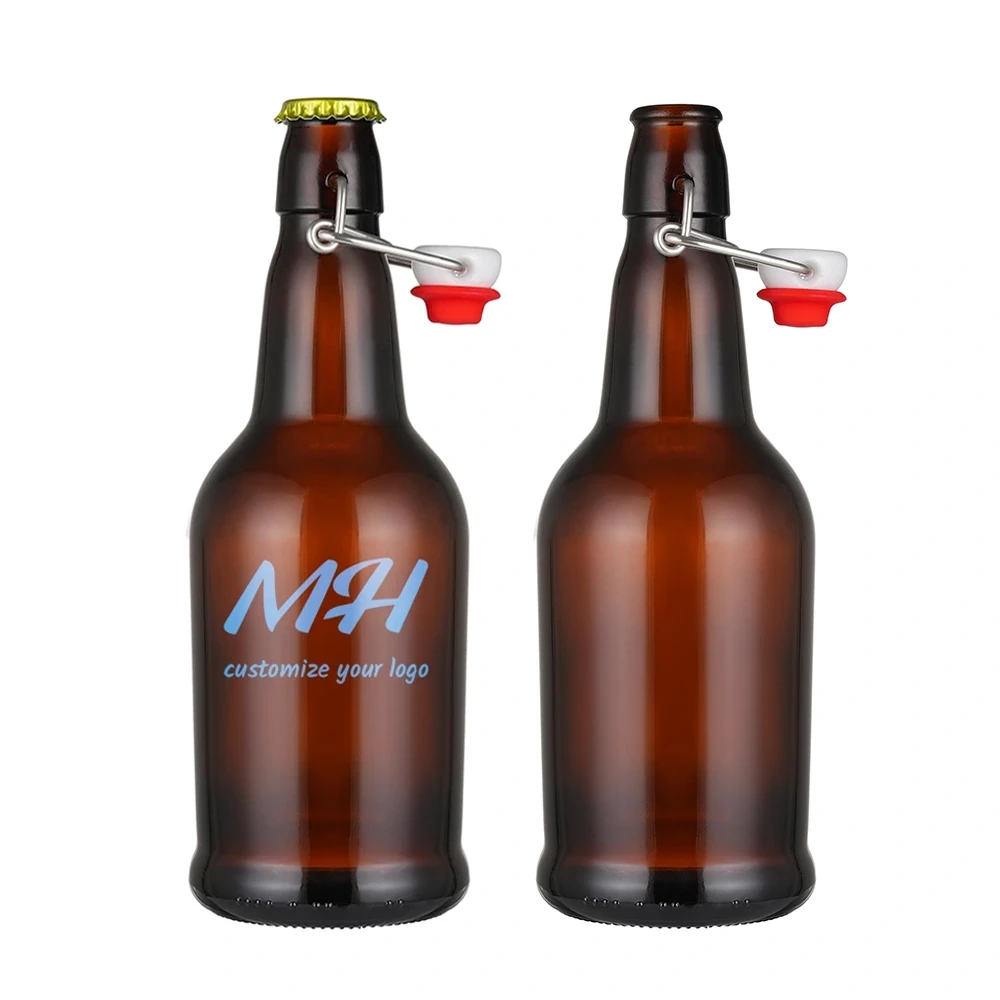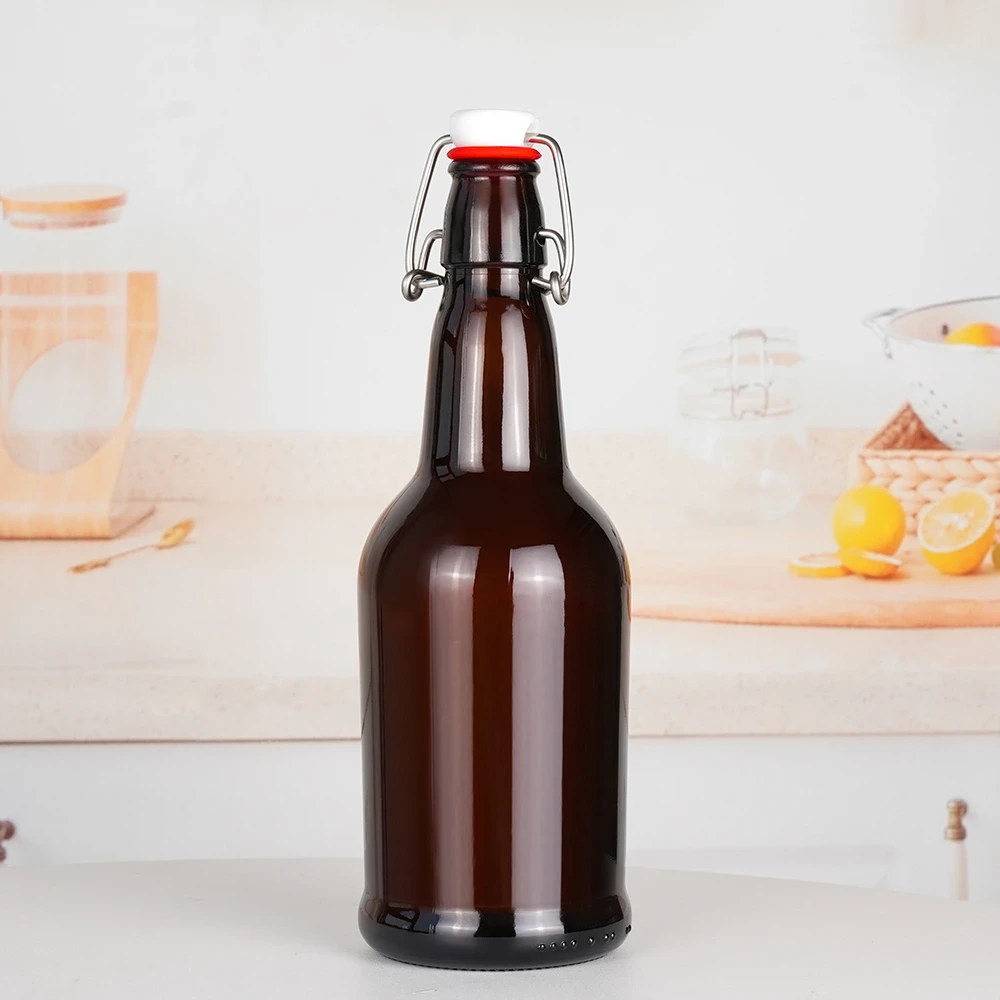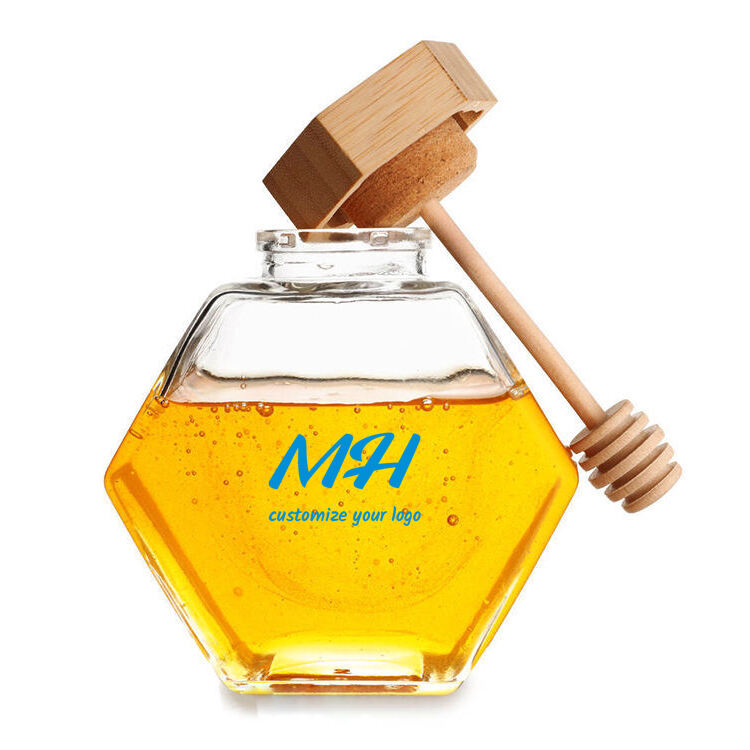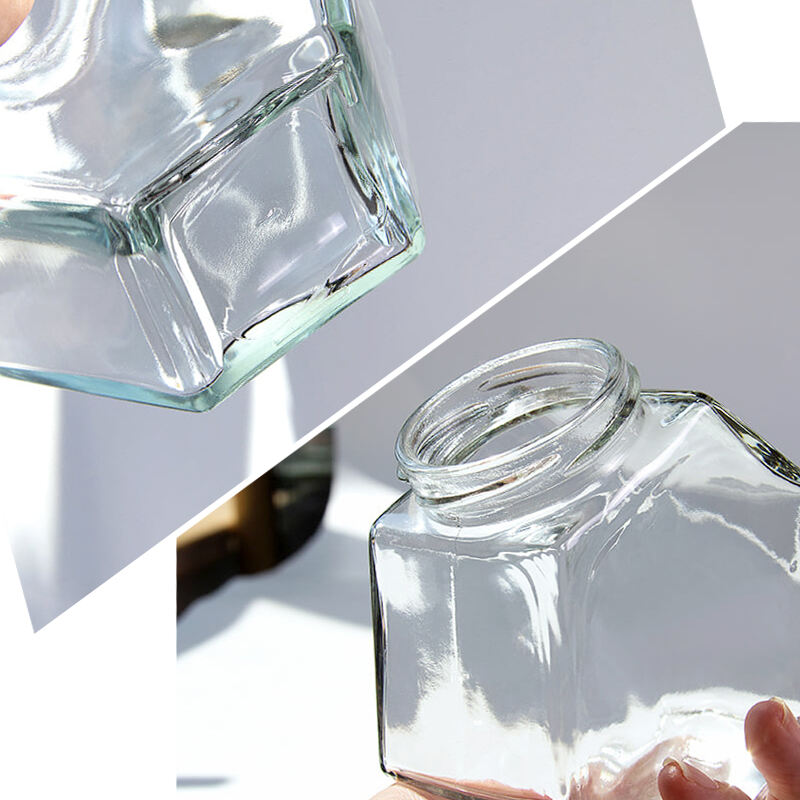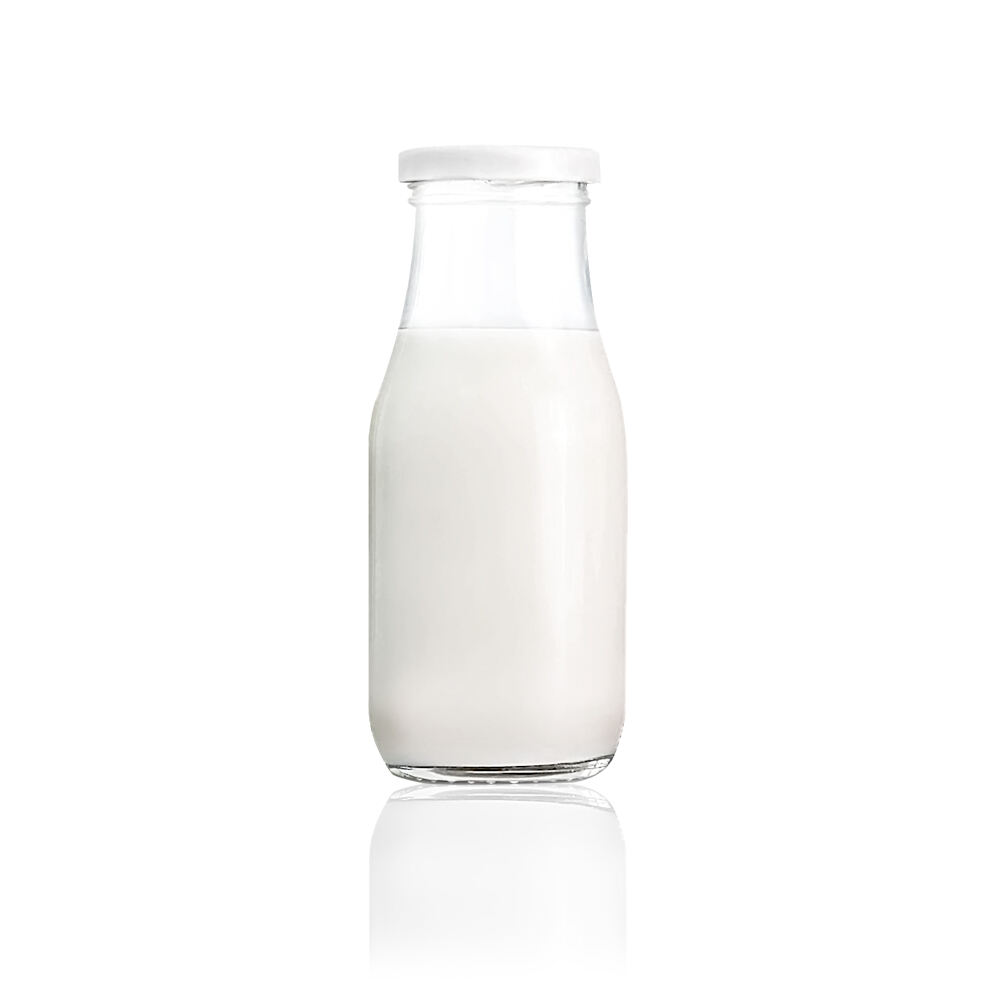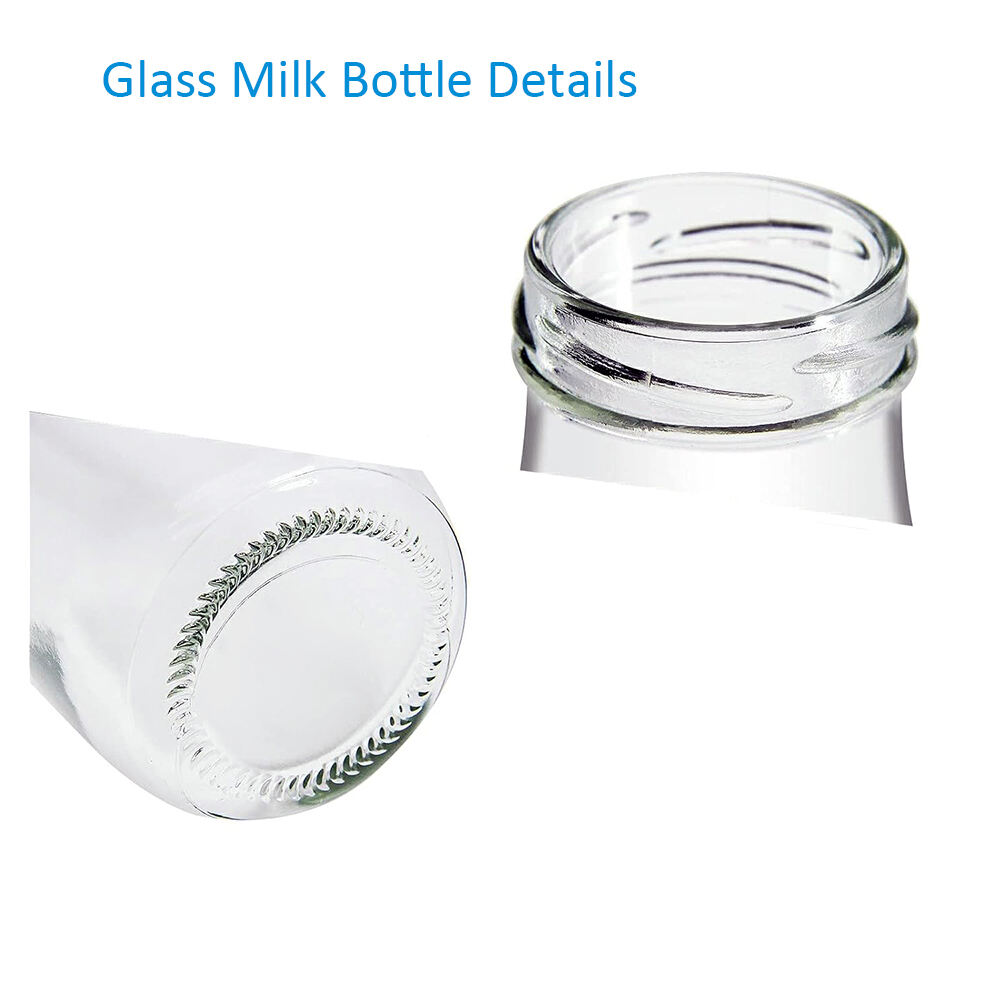إن زجاجة الغطاء المتأرجح، مع سلكها المميز وغطائها، تجمع بين التصميم التاريخي وعلم المواد والتصنيع والخدمات اللوجستية. إنها أكثر من مجرد وعاء، إذ توفر إغلاقًا موثوقًا وإمكانية إعادة الاستخدام تمتد عبر القرون. يُلقي هذا التقرير الضوء على رحلتها بدءًا من المواد الخام على أرض المصنع، مرورًا بإنشاء المكونات والتركيب والتحكم في الجودة والتعبئة، وصولًا إلى سلاسل التوريد العالمية، لتصل إلى مستخدمين متنوعين من معبئي المياه إلى صانعي الجعة المنزليين. إن فهم هذه الرحلة يُظهر الترابطات التي تحدد دورة حياة هذه الزجاجة الرمزية.
1. السياق التاريخي وتطور التصميم
تنبع история زجاجة الغطاء المتأرجح من الحاجة إلى أغطية فعالة وقابلة لإعادة الاستخدام، خاصةً للمشروبات الغازية.
على الرغم من أن الغطاء المعدني (الذي ظهر عام 1892) حلّ إلى حد كبير محل زجاجة الغطاء المتأرجح في الأسواق الجماهيرية، إلا أنها عادت للظهور في الثمانينيات بفضل إمكانية إعادة استخدامها والمظهر الجذاب لها. واستمرت شركة تعبئة البيرة ويزيلبورغر باستخدامها. وفي ألمانيا، سيطر "سالتيرسفيرشلوس" على سوق المياه المعدنية حتى عام 1969.
لقد ساهمت الأحداث التاريخية في الاستخدام. استخدمت كوكا كولا في بداياتها أغطية متأرجحة في عام 1899. وقدمت شركة غرونتش تصميمًا أنحف في عام 2008.
مقارنة بالأغطية المعدنية، توفر الأغطية المتأرجحة درجة أقل من الإحكام، مما يجعلها أقل ملاءمة لتخزين المشروبات الغازية لفترات طويلة جدًا. قبل ظهور الأغطية القابلة للطي، كانت الفوانيس هي الخيار الرئيسي، ولكنها غير موثوقة من حيث الحفاظ على الغاز. إن تطور الأغطية المتأرجحة يظهر السعي نحو تحسين الإغلاق والسهولة وإمكانية إعادة الاستخدام.

2. علم المواد ومواردها
إن زجاجة الغطاء المتأرجح تتكون من مزيج من الزجاج وسلك معدني وغطاء محكم. الزجاج المستخدم في زجاجات الأغطية المتأرجحة هو عادة زجاج صودا-جيرية مصنوعة من رمل السيليكا وصودا الغسول والحجر الجيري والألومنيا وقطعة الزجاج المعاد تدويرها (الزجاج المستعمل). يلعب خلط المواد الخام دورًا حاسمًا في ضمان الجودة. إن استخدام الزجاج المعاد تدويره ضروري لتحقيق الاستدامة، حيث يقلل من الحاجة إلى المواد الخام ويقلل من استهلاك الطاقة. يمكن أن يؤدي استخدام الزجاج المعاد تدويره الملوث إلى عيوب في المنتج. وتستخدم شركات مثل Minghang الغاز الطبيعي المسال وكمية أكبر من الزجاج المعاد تدويره. كما تُستخدم تحليل دورة الحياة (LCA) لقياس التأثير البيئي، مع أخذ الوزن والمحتوى المعاد تدويره في الاعتبار. كما يسهم تقليل الوزن في تحقيق الاستدامة.
يكون المسمار السلكي عادةً من الصلب، وغالبًا ما يكون مطليًا بطبقة من الفولاذ المقاوم للصدأ أو الكروم لزيادة المتانة. يتضمن التشكيل ثني السلك ليأخذ الشكل المطلوب، وقد يلي ذلك عملية طلاء.
يعد الغطاء أو الحشية ضروريًا لتحقيق إغلاق محكم، ويكون غالبًا مصنوعًا من المطاط أو السيليكون. قد يكون السيليكون نافذًا للغازات، مما يؤدي بمرور الوقت إلى الأكسدة. يؤثر اختيار مادة الحشية على قدرة الحفاظ على التكربن ويمنع التلوث. المطاطية والمقاومة للمحتويات هما عنصران رئيسيان. يؤدي الاستخدام المتكرر إلى تدهور حالة الحشيات.
تنطبق الاستدامة على جميع المواد. يعد إمكانية إعادة الاستخدام من الفوائد البيئية الرئيسية. تؤكد شركات مثل مينغهانغ على الإنتاج الصديق للبيئة. تسعى صناعة الزجاج إلى تعزيز عمليات إعادة التدوير وتقليل الانبعاثات. يفضل المستهلكون التغليف المستدام مثل الزجاج. وعلى الرغم من أن الزجاج قابل لإعادة التدوير بشكل غير محدود، إلا أن إعادة تدوير الزجاج الأبيض تشكل تحديًا.
تشمل عمليات التوريد التعامل مع موردين عالميين. الجودة والاتساق هما عنصران أساسيان لضمان الأداء. الزجاج الغذائي الخالي من مادة الرصاص/المعادن الثقيلة ضروري للاستخدام في مجالات الأغذية والمشروبات.
3. تصنيع زجاجة من الزجاج
إنتاج الزجاجات الزجاجية، بما في ذلك الأغطية المتأرجحة، يتم بشكل آلي بالكامل، ويتم باستخدام آلة القسم الفردي (IS). تتم خلط المواد الخام بدقة في مرحلة تحضير الدفعة. تُذاب الخلطة في فرن الصهر على درجة حرارة تتراوح بين 1500 إلى 1600 مئوية لإنتاج زجاج مذاب متجانس. تُغذى كتل الزجاج المنصهر إلى آلة IS، حيث تستخدم طريقة النفخ والنفخ (للعنق الضيق) أو الطريقة الضاغطة والنافخة (للفم العريض) في تشكيل الزجاج. يُعد تشكيل الجسم الزجاجي (Parison) خطوة حاسمة لتوزيع الزجاج بشكل صحيح. تصميم القوالب وموادها (الحديد الزهر/السبائك) والتحكم في درجة الحرارة عوامل أساسية في تحديد الشكل والنتيجة النهائية.
بعد التشكيل، تتم معالجة الزجاجات حرارياً (الإشعال) في فرن الإشعال (Lehr) للتخلص من الإجهادات الداخلية من خلال التسخين المنضبط ثم التبريد البطيء. يؤدي الإشعال غير السليم إلى تشقق الزجاج أو كسره.
تشمل الفحوصات الأولية للجودة فحوصات بصرية وآلية لأبعاد وعيوب مثل الحصى والحبال والشقوق والتورمات. تكتشف الأنظمة البصرية الآلية هذه العيوب. تقلل أنظمة SPC والحلقات المغلقة من العيوب. تؤثر مقاييس الزجاج وشكله وتراكيبه على المعايير. تحسن المعالجات السطحية من القوة.
4. تصنيع مكونات الغطاء المتأرجح
يتكون الغطاء المتأرجح من ثلاث قطع: سدادة، ختم، وسلك معدني. تُصنع السدادة (بلاستيكية أو سيراميكية) عبر صب الحقن أو التلبيد الحراري. يُصنع الختم (من المطاط أو السيليكون) بقوالب أو تقطيع دقيق لتحقيق المطاطية والختم. الدقة مهمة. يُشكّل السلك المعدني (من الفولاذ، غالبًا مطلي بالكروم أو الفولاذ المقاوم للصدأ) بواسطة آلات تشكيل السلك الآلية. قد يلي ذلك طلاء لتحسين المظهر والحماية.
توجد آلات متخصصة لثني وتركيب السلك المعدني والسدادة والختم. الجودة العالية للمكونات أمر بالغ الأهمية؛ إذ إن العيوب تُضعف الختم والوظيفة.
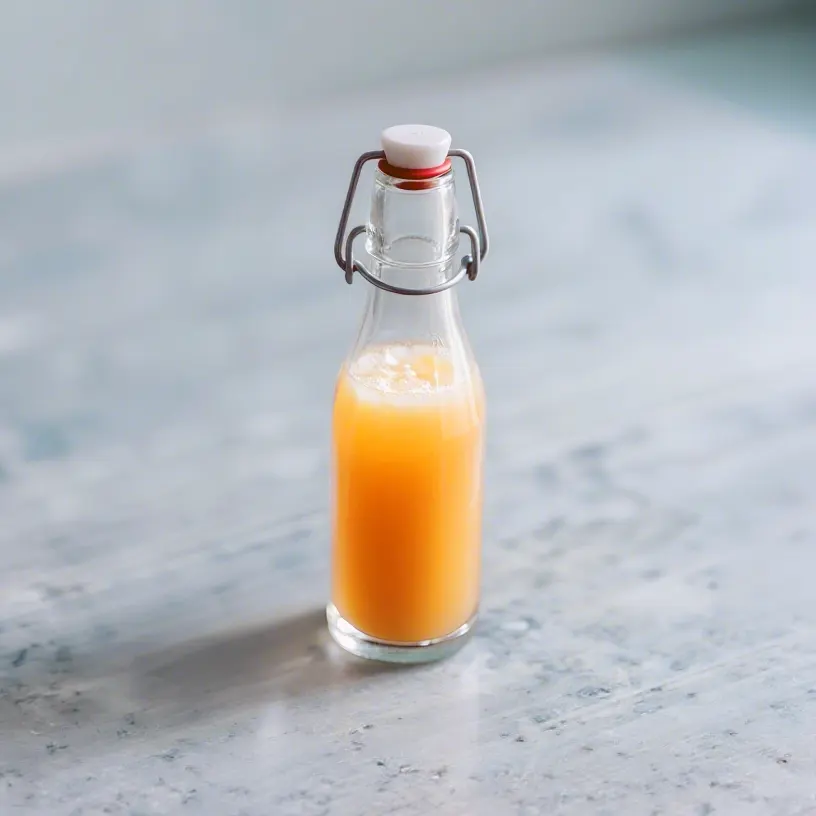
5. التجميع والتكامل
تُجمَّع المكوّنات لتشكّل الزجاجة النهائية ذات الغطاء المتأرجح، وذلك عبر عمليات تتراوح بين اليدوية والكاملة الأتمتة. تُعتبر الخطوط الأوتوماتيكية شائعة في الإنتاج الكمي. تشمل الخطوات وضع الغasket على السدادة، وتركيب المقبض السلكي على عنق الزجاجة، ثم دمج السدادة والمقبض لتكوين الختم. تختلف مستويات الأتمتة. تشمل التحديات وجود تفاوت في تحمّل المكونات، مما يتطلب معايرة دقيقة. يُعد تثبيت المقبض ووضع الغasket أمرًا بالغ الأهمية. لقد حافظت شركة مينغهانغ دائمًا على الدقة من خلال التجميع اليدوي.
6. ضمان الجودة وتحليل الفشل
الجودة لها الأولوية. تشمل نقاط ضبط الجودة الحرجة المواد الخام، وتشكيل الزجاج، والتلدين، وتصنيع المكونات، والتجميع، وفحص الزجاجات النهائية. تشمل مناهج اختبار الجودة القياسية الصدمة الحرارية، والضغط الداخلي، والعزم، والتأثير، وسلامة الختم، والحمل العمودي.
في الاستخدام الفعلي، تشمل الأعطال الشائعة: فشل الختم بسبب الاستخدام المتكرر، الكربنة المفرطة للداخل بسبب سقوط السدادة، الأكسدة الناتجة عن اختراق الغاز، التشقق بسبب الصدمة الحرارية، الأضرار الناتجة عن التأثير الخارجي، عيوب الزجاج نفسه، فقدان الضغط الداخلي، إلخ. بالإضافة إلى ذلك، ما إذا كان المنتج يتوافق مع معايير دولية مثل ISO 9001، وما إذا كان المورد قد حصل على شهادة من مؤسسات مثل FDA و BRC، فإن هذه العوامل ستؤثر أيضًا على جودة المنتج.
تشمل أنماط الفشل الشائعة فشل الختم بسبب الاستخدام المتكرر، الكربنة المفرطة (انفصال السدادة)، اختراق الغاز (الأكسدة)، كسر الصدمة الحرارية، الأضرار الناتجة عن التأثير، عيوب الزجاج، وفقدان الضغط. بالإضافة إلى ذلك، من الضروري مراعاة ما إذا كان المنتج يتوافق مع معايير نظم الجودة مثل ISO 9001 ومتطلبات شهادة الموردين مثل FDA و BRC.
7. التعبئة والتغليف والمنصات
يتم تعبئة الزجاجات ووضعها على منصات نقالة لمنع كسرها. تشمل طرق تعبئة المنصات القياسية (أطباق، فيلم)، والكرتون (علب فردية)، وتعبئة المنصات زائد (فواصل)، ووحدة السائبة (وحدات مغلفة حراريًا). تستخدم الإجراءات الوقائية مواد مثل الإسفنج، والفقاعات الهوائية، وألواح المموج، والرغوة، ووسائد هوائية، ولفات فردية لامتصاص الصدمات ومنع الخدوش. تثبيت المنصة يستخدم الغلاف الحراري، ولوحات الزوايا، وأحزمة التثبيت. تؤكد اعتبارات التخزين على البيئات الجافة والمستقرة والتكديس الاستراتيجي. تستخدم الحلول الاقتصادية مواد خفيفة الوزن وصديقة للبيئة.
8. سلسلة التوريد والخدمات اللوجستية
تربط سلسلة التوريد بين المصنعين (مينغهانغ)، ومزودي الخدمات اللوجستية، والمستودعات/مراكز التوزيع، والعملاء. تتدفق البضائع من المواد الخام إلى المصنعين، ثم إلى المستودعات/مراكز التوزيع، وأخيرًا إلى العملاء. تشمل أنماط النقل الشاحنات والسكك الحديدية والبحر (الدولي)، والجو (للحالات العاجلة). وتتولى إدارة المستودعات تنظيم المخزون وتجهيز الطلبات والتخزين. تركز رؤية وتحسين سلسلة التوريد على إدارة التتبع والتسليم في الوقت المحدد والتحكم في التكاليف والتنمية المستدامة. أما التحديات الرئيسية فتتضمن الاختناقات مثل التلف أثناء النقل وتقلبات الطلب وعمليات الإفراج الجمركي وقيود السعة التخزينية والتأخيرات في الإنتاج. تتضمن استراتيجيات الاستجابة تنويع الموردين وتحسين شبكة النقل وتطبيق التكنولوجيا الرقمية وتعزيز آليات التعاون بين شركاء سلسلة التوريد.
9. توزيع السوق وتسليم المنتج النهائي إلى المستخدم
تشمل قنوات التوزيع مصانع التعبئة التجارية (التسليم بالجملة)، وموردي صناعة الجعة المنزليّة (العلب)، والمتاجر العامة (بأحجام متفاوتة)، والبيع المباشر للاستهلاك عبر التجارة الإلكترونية (DTC). تتم عمليات التوصيل للمستخدم النهائي بواسطة الشاحنات (بالجملة) أو الناقلين الإقليميين (العلب) أو خدمات الشحن (للطلبات الفردية). التركيز في المتطلبات اللوجستية هو على التغليف الوقائي بسبب هشاشة الزجاج. تشمل التحديات التعقيد في الكيلومتر الأخير، والتكسير، وتكاليف الشحن المرتفعة، والخدمات اللوجستية العكسية، وتلبية توقعات العملاء. الحلول الابتكارية تشمل تحسين التغليف والتعامل المتخصص. تؤثر الاختلافات الإقليمية والأحداث العالمية على العمليات اللوجستية.
10. التطبيقات الصناعية واعتبارات الأداء
تتناسب زجاجات السوينغ توب مع تطبيقات متنوعة. تُستخدم في تعبئة المشروبات الغازية (البيرة، الكومبوتشا) لمقاومتها للإغلاق والضغط، وغالبًا ما تكون مصنوعة من زجاج كثيف، ملون باللون العنبر. وفي الاستخدامات culinaria (الزيوت، الخل) يُقدّر الإغلاق الهوائي للحفاظ على النضارة. قد تُستخدم زجاجات فاخرة في تعبئة المشروبات الروحية. يُفضّل إعادة استخدام الزجاجات في التخمير المنزلي وقوّة التكربن. وتُستخدم في تعبئة المياه (عاديّة، غازية) لتعزيز العلامة التجارية وسهولة الاستخدام.
تشمل الاعتبارات العامة للأداء الإغلاق الهوائي، وإمكانية إعادة الاستخدام، والمرونة، وسهولة الاستخدام، والجاذبية الجمالية، وسلامة الأغذية. من العيوب تكاليفها العالية والوزن الأكبر مقارنةً بالبلاستيك، إضافةً إلى هشاشتها. يشهد سوق التعبئة الزجاجية نموًا مدفوعًا بتفضيل المستهلكين للاستدامة.
الاستنتاج
إن عملية زجاجات السدادة اللولبية من المواد إلى المشترين معقدة إلى حد ما، وتشمل إعداد المواد، تصنيع الزجاجات، والرقابة على الجودة، والتخزين والنقل. من المواد الخام وتشكيل الزجاج إلى تجميع المكونات والاختبارات الصارمة، كل خطوة مهمة. إن تطور هذه العملية يعكس الحاجة إلى سدادات فعالة وقابلة لإعادة الاستخدام. تضمن علوم المواد الأداء والاستدامة. التصنيع الآلي يحقق إنتاجية عالية وثبات الجودة. تمنع ضمانات الجودة والاختبارات حدوث الأعطال. التغليف يحمي الزجاج الهش أثناء النقل. سلسلة التوريد تربط الإنتاج بعدة مستخدمين، وتحتاج إلى مواجهة مختلف التحديات في عملية اللوجستيات. تكون الزجاجات الزجاجية جذابة بفضل وظائفها العملية وإمكانية إعادة استخدامها والمظهر الجميل لها. رغم عيوب التكلفة العالية والهشاشة، إلا أنها لا تزال وعاءً تعبئياً ذا قيمة.
 EN
EN AR
AR BG
BG HR
HR CS
CS DA
DA NL
NL FI
FI FR
FR DE
DE EL
EL HI
HI IT
IT JA
JA KO
KO NO
NO PL
PL PT
PT RO
RO RU
RU ES
ES SV
SV TL
TL IW
IW ID
ID LV
LV LT
LT SR
SR SK
SK SL
SL UK
UK VI
VI HU
HU TH
TH TR
TR FA
FA GA
GA LA
LA MI
MI MN
MN
